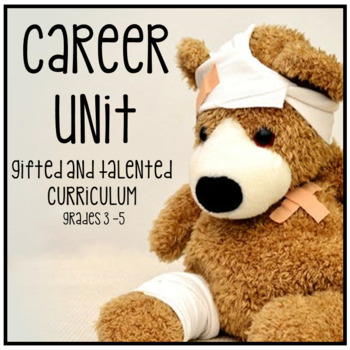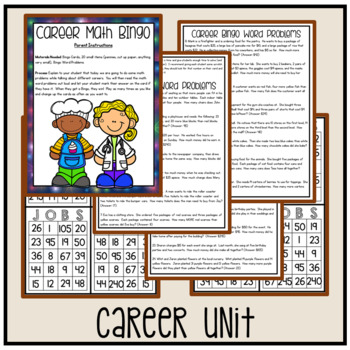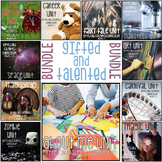Gifted and Talented Curriculum - Career Unit Grades 3 4 5
- Zip
What educators are saying
Also included in
- This BUNDLE contains both a printable packet version AND individual JPEG files for each document so that you can easily upload to Google Classroom. Since they are in JPEG format, students should be able to write on the documents in Google Classroom.Additionally, this bundle now includes a PARENT INSPrice $18.00Original Price $20.00Save $2.00
Description
This unit contains both a printable packet version AND individual JPEG files for each document so that you can easily upload to Google Classroom. Since they are in JPEG format, students should be able to write on the documents in Google Classroom.
Additionally, this unit now includes a PARENT INSTRUCTIONS edition that you can easily pass on to parents when students are out of school. The instructions are easy to follow and allow parents to work with students just as you would in the classroom! This also makes it super easy to send home additional materials for students that need extra enrichment outside of your classroom!
This Career mini-unit was developed for a Gifted and Talented classroom, but could also be used in the regular classroom. It is designed for grades 3-5 but could be adapted for other grades as well. Every activity is common core aligned and the standards are listed on each activity intro page.
Included in this mini-unit:
Dream Job Journal - This journal prompt asks students to think of what they would do with their lives if they had all the money in the world. This encourages them to think of what they would LIKE to do if money didn't matter. Then students will look back at what they wrote and decide what a "dream job" might be, draw a picture of themselves doing it, and write pros and cons of the job. Journaling sheets are included. (GT: Creativity, Critical Thinking, Affective Development, Common Core Standards: W.3.1, W.3.2, W.3.8, W.4.1, W.4.4, W.4.8, W.5.1, W.5.2, W.5.3, W.5.4, W.5.8)
Career Inferences - Instructions are included for creating your own career inference packets using items you have around your home and classroom. Students will use their guide sheet (included) to determine which job each packet represents. (GT: Creativity, Critical Thinking, Teamwork, Common Core Standards: RI.3.3, RI.3.7, RI.4.3, RI.4.7, RI.5.3, RI.5.7)
Razzle Dazzle Words - Students will use the given vocabulary terms (career related) and definitions to create a visual dictionary sheet (included) that includes the word, definition, picture, a sentence, and synonyms. (GT: Vocabulary, Creativity, Common Core Standards: L.3.6, L.4.6, L.5.6)
Career Math Bingo - Students will solve math word problems (included) and cross off their answers on (included) bingo cards. (GT: Differentiation, Critical Thinking, Competitiveness, Common Core Standards: 3.OA.A.1, 3.OA.A.3, 3.OA.B.5, 3.OA.C.7, 3.OA.D.8, 4.OA.A.3, 4.OA.A.2, 4.NBT.B.4, 4.NBT.B.5, 5.NBT.B.6)
Career Logic - Students will solve a grid logic puzzle about careers (answer key included). (GT: Critical Thinking, Common Core Standards: RL.3.1, RL.4.1, RL.5.1)
Ingredients for Success - Students will watch as you follow this recipe to create play-doh. Each part represents something needed to be successful in life. (GT: Listening, Critical Thinking, Common Core Standards: SL.3.1, SL.4.1, SL.5.1)
Career Research - Students will research careers that seem interesting to them. They will use the given form to guide their research.






